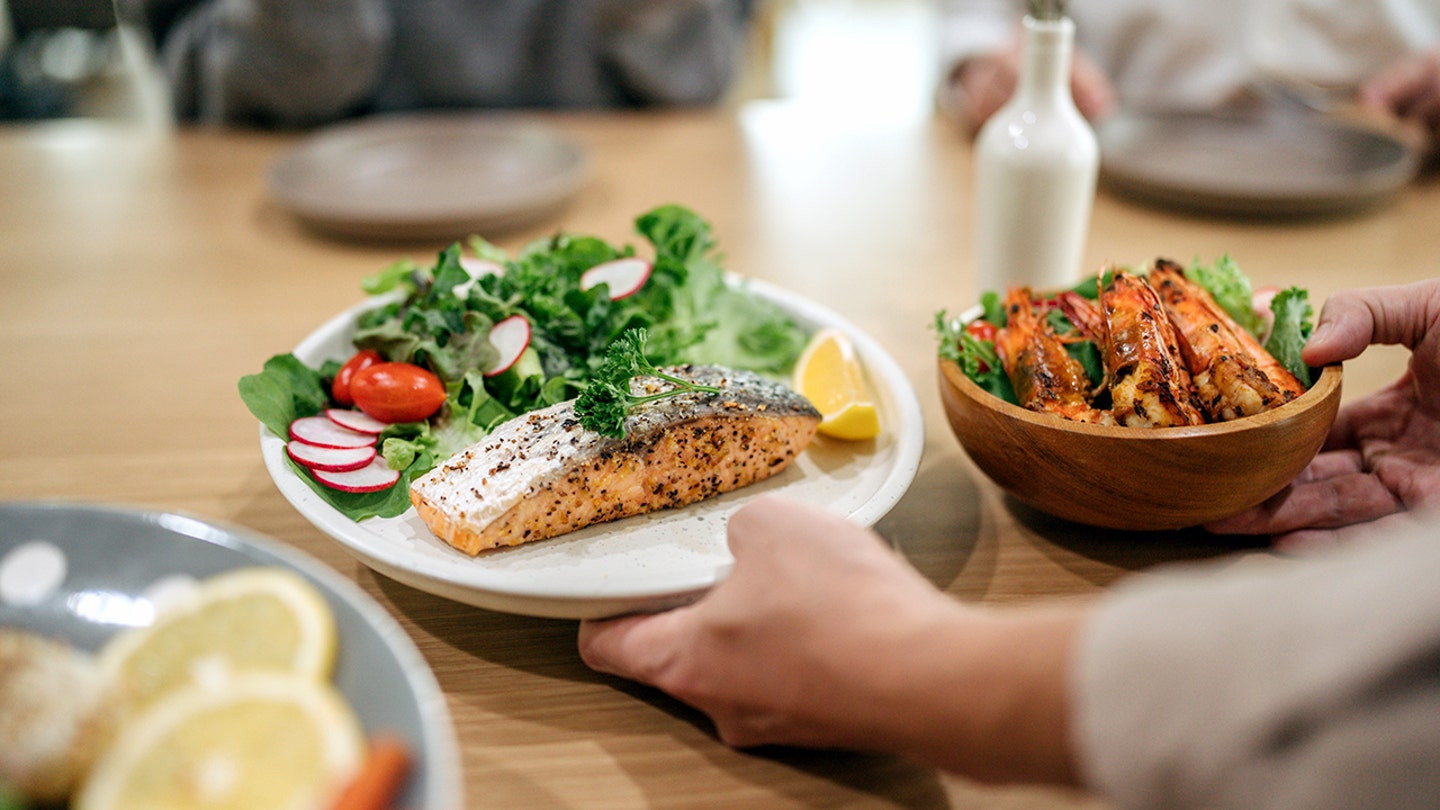NEWYou now have the option to listen to articles from Fox News!
While the Vikings are commonly associated with raiding and sailing, their dietary habits are now gaining attention.
The “Viking diet” — also known as the “Nordic diet” — is based on the food consumed by Norse people from the 8th to 11th centuries, and it is currently experiencing a resurgence.
Could this ancient way of eating be a valuable addition to your meal plan?
THE WATERMELON DIET HAS GONE VIRAL — HERE’S WHAT EXPERTS SAY ABOUT THE WEIGHT-LOSS TREND
Registered dietitian and food blogger Lauren Harris-Pincus, who is based in New Jersey, discussed the specifics of the diet, its advantages and disadvantages, and effective ways to adopt it with Fox News Digital.
The Viking diet includes a significant amount of meat and animal fat compared to the Mediterranean diet, which also emphasizes whole foods. (iStock)
What did the Vikings eat?
“[The Vikings] were restricted to the foods available to them at the time,” according to Harris-Pincus. “Their diet centered on clean, sustainable foods, which is why we are discussing its health benefits today.”
According to the dietitian, the Viking (or Nordic) diet aligns with today’s popular wellness plans. “Similar to the Mediterranean diet … it’s based on whole foods,” she explained.
YOUR DAILY SANDWICH COULD BE MAKING YOU SAD AND ANXIOUS, HEALTH EXPERTS WARN
Ultraprocessed foods have been making headlines, with some reports indicating that Americans derive over half of their calories from lower-quality, unhealthy food groups.
Fiber-rich carbohydrates like fruits, vegetables, legumes, nuts, and whole grains “promote gut health and help prevent lifestyle diseases such as diabetes, cardiovascular disease, and some cancers.”
“It’s not crucial, advisable, or feasible to strictly adhere to the Viking diet in our current food environment.”
Harris-Pincus shared some of the key components of the Viking diet, listed below.
- Vegetables: onions, garlic, leeks, cabbage, carrots, turnips, parsnips
- Nuts: walnuts, hazelnuts
- Fruit: raspberries, bilberries, plums, wild apples
- Meat: from cattle, pigs, sheep, ducks, hens, and even horses or geese
- Seafood: herring, salmon, mackerel, as well as whale and seal meat
- Grains: rye, barley, oats, millet, buckwheat
- Dairy: milk, butter, cheese
- Eggs, along with salt and spices for food preservation
Beer and mead (a honey-based fermented drink) were also common, sometimes consumed even by children due to the lack of clean water.

While the high fat content helped Vikings survive cold winters, the excessive amount of saturated fat poses a cardiovascular risk, experts say. (iStoc)
Potential downsides
Despite its natural, unprocessed appeal, the Viking diet may have some nutritional drawbacks.
“This diet contains a significant amount of meat and animal fat compared to the Mediterranean diet,” cautioned Harris-Pincus.
CLICK HERE TO GET THE FOX NEWS APP
“While the high fat content helped Vikings survive cold winters, the excessive amount of saturated fat is a cardiovascular risk.”
The preserved nature of Viking-era food also meant high sodium levels, which is another concern for heart health. Additionally, the beer-heavy lifestyle is not in line with healthy living.

“Anyone can include more whole foods, especially fiber-rich carbs, while limiting highly processed foods high in sugar, fat, and sodium.” (iStock)
Tips to eat like a Viking
To embrace a modern-day Viking diet, Harris-Pincus recommends avoiding mead while adopting some of the smarter habits.
CLICK HERE TO SIGN UP FOR OUR LIFESTYLE NEWSLETTER
“Anyone can include more whole foods, especially fiber-rich carbs, while limiting highly processed foods high in sugar, fat, and sodium,” she suggested.
Simple actions such as cooking more meals at home and prioritizing quality ingredients could yield positive results, according to the expert.
For more Health articles, visit www.foxnews.com/health
“It’s not crucial, advisable, or feasible to strictly adhere to the Viking diet in our current food environment,” stated Harris-Pincus.
“However, cooking at home with whole-food ingredients that are rich in protein and fiber is always a good practice.”
Khloe Quill is a lifestyle production assistant with Fox News Digital. She and the lifestyle team cover a range of story topics including food and drink, travel, and health.
In a shocking turn of events, a local bakery in downtown New York City has been accused of using expired ingredients in their baked goods. The bakery, known for its popular pastries and cakes, is now under investigation by the health department.
Customers who had purchased items from the bakery reported feeling ill after consuming the products. The health department conducted an inspection of the bakery and discovered several expired ingredients in the kitchen.
The bakery owner denied the allegations, claiming that they always follow proper food safety protocols. However, the health department has temporarily shut down the bakery until further investigations can be conducted.
This incident serves as a reminder for consumers to always check the expiration dates on food products before purchasing them. It also highlights the importance of proper food safety practices in all food establishments.
As the investigation unfolds, the future of the bakery remains uncertain. Customers are advised to seek refunds for any products purchased from the bakery in recent days.





